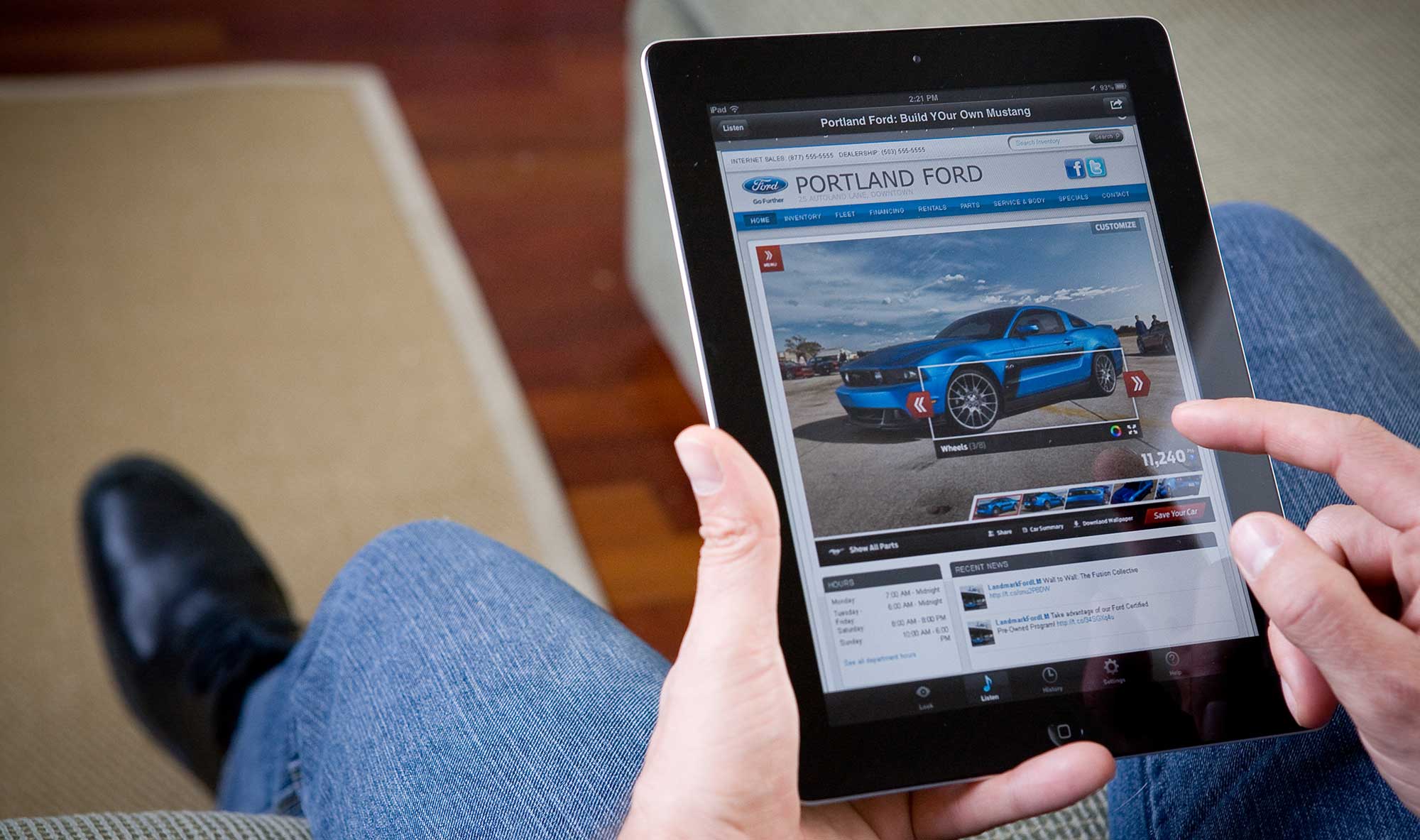Posted January 1, 2016
Have You Seen The Mobile Statistics?
BY Geoffrey Karr

If you're in marketing at all, by now you've seen 100 reports that show the staggering numbers for mobile adoption. Mind blowing mobile projections are all over the place - projections such as mobile web viewing overtaking desktop viewing as early as this year, or that 10% of media consumption is done on the smart phone, while only 1% of advertising budgets are spent on it. Other reports say 65% of email is already viewed on a smartphone or tablet first. The most resounding one may be that smartphone owner's phones stay within 2 feet of the owner for pretty much the whole day. It's pretty clear that the mobile-first train of thought has left the station and the demand is there for creative mobile engagement strategies.
Has any other media format ever been adopted this fast? Certainly nothing that's ever been as close to a truly "personal" device as the mobile phone. The point is, the numbers say the time for fence sitting is long over. It's time to dive into the mobile web and figure out how to get ad spend where consumers are spending their time. There are way too many mobile channels with barriers to entry varying from ultra low to super high for advertisers to still be on the sidelines. There is a channel that's possible, affordable, and effective for just about every business.
It's time for less reports on how great mobile is/will be - and time for more reports about creative uses of mobile as an advertising/e-commerce medium. Since mobile is such a personal device, old tricks may no longer be valid. Banners and pop ups and all that junk are intrusive enough on a desktop, but on mobile they can be downright insulting in the form of sneakily opted-in push notifications or clunky banner ads in utility apps. If used at all, these old dogs need a new trick in the form targeting and tailoring relevance based on user location, time of day, or past user trends, or they'll be virtually ignored. Not all the stats are positive - the chances of users actually clicking banner ads is shockingly low, and of the clicks that DO take place, half of them are accidental.
Right now, we all seem to be at a content stalemate. Many brands seem to be reticent to implement a lot of rich mobile content without consumer demand for it up front, and consumer demand has been lukewarm based on the lukewarm efforts of a lot of advertisers. Users aren't lining up and clamoring for the content that doesn't exist yet, and the brands don't seem to be investing in it since the users aren't lined up and clamoring.
The lesson seems to be that consumers won't give out their time for free. If they are going to opt-in for marketing, marketers have to make the effort and make it worth their audience's time - which is why mobile engagement is highest with sweepstakes and discounts. That's not to say "paying" users is the only incentive that can work, but users need a clear benefit before they'll give away their time to install an app and scan a Digimarc or a QR code. So far that benefit has been somewhat unclear in many cases.
Utility is most likely the sweet spot. Another fun statistic like those listed earlier, is that an a sizable percentage of smartphone and tablet owners are using their devices for product research in the home and in store. Apps and content that make the buying process easier are low hanging fruit that could really make an impact. Here's a good example of a missed opportunity: The Wirecutter. The Wirecutter is a fantastic blog that takes consumer electronics and simplifies the research portion of the sales cycle by magnitudes. The blog is dedicated to finding the "best" of many electronics categories such as TV, headphones, receivers, speakers, laptops, smartphones and much more by testing all of the various brands and providing the results in an easily digestible format breaking down products into "top of the line" and "best value" and "budget" recommendations. Their missed opportunity? No app! The Wirecutter is providing a great service, but using the blog on the go is spotty since carrier services can make loading the full site a slow affair.
A beautifully mobile optimized app version would be an amazing resource to have for all of those smartphone and tablet product researchers.
Who is doing it right? A great example of a company that's got their mobile act together is Starbucks. They've created a highly useful app that makes paying in store and collecting loyalty rewards easier for their customers. Starbucks isn't having to spam banner ads to get their logo in front of people, people are actively seeking them out because Starbucks is showing they value their customer's time by saving them some at the register.
As marketers, the new job isn't to push products into people's faces, it's to get people to want to stick their faces in front of your products.

